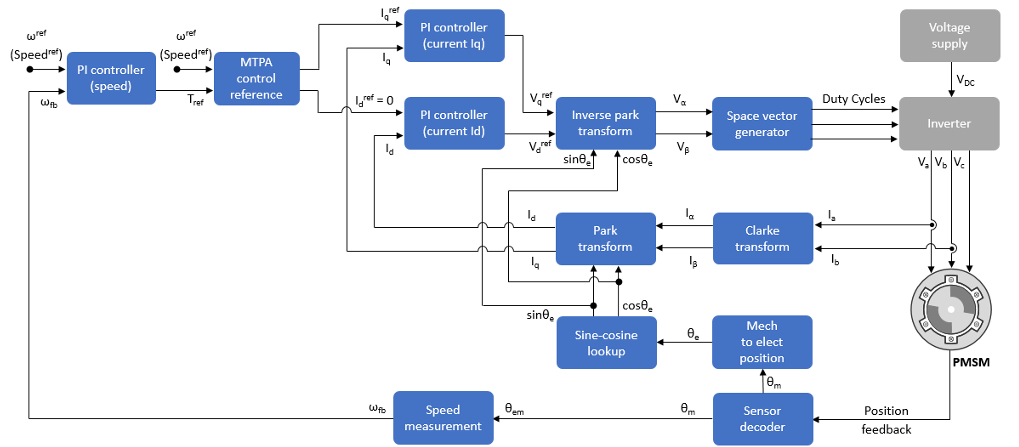From the design phase of your industrial project, our experts will help you define your needs as accurately as possible. From choosing the actuator and its associated sensors to designing the power bridge and control law, the Electronics activity of LACROIX offers its customers a full range of services combining methodology and advice to ensure the motor control of your product.
The Electronics activity of LACROIX is proficient in all the skills involved in developing a complete chain including the motor, power electronics and software component.
Motor control: at the heart of the product
In the aeronautics or automotive fields, actuators (which generate an action, a movement) can be placed in different locations to meet the required motor functions, for example in:
- a seat, enabling its movement
- an aircraft landing gear
- a fluid pump
The correct functioning of a mechatronic solution, a traction chain or even a robot, is determined by multiple criteria, including the sensor/actuator/motor control trio.
According to your use case and needs, our experts will help you choose the best motor: an AC (alternating current) motor, a DC (direct current) motor, a brushless motor (brushless direct current, permanent magnet synchronous motor) or a stepper motor. This choice depends on:
- the function,
- the power being used,
- the starting torque,
- the expected accuracy of the speed and position control,
- the desired maintenance,
- the total cost.
Depending on the chosen motor and system, sensors will be selected in order to measure some physical parameters (absolute or relative position, speed, current, temperature, etc.) required for the motor control.
The motor control theory makes it possible to generate the control low in accordance with the desired actuator movement.
Power bridge: the essential energy source
The engineers in our design center are skilled in power electronics, enabling conversion of electrical energy from a network (battery, grid, etc.) into energy which can be used by the motor. To ensure its efficiency, heat dissipation must be kept under control and temperature variations must be taken into account.
These different areas of expertise provide real assets, encompassing complex technologies often used in the aeronautics sector, as well as in automotive and industrial fields.
Control law: the key function for running a motor
The control law is the software component that controls the power bridge, which in turn controls the motor. This control law involves complex mathematical functions and determines the position of the motor, its speed, its torque, etc.
Each type of motor must be controlled differently. For example, the control law is quite simple for DC motors, but more complex for brushless motors (FOC: field-oriented control).

Control low (source : website MathWorks)
Our design office uses simulation software programs, such as MATLAB and Simulink, to model and simulate the motor with its regulation loops in its global environment. This makes it possible to anticipate the system’s reactions to external disturbances (obstacles, vibrations, disruptive torque, friction, etc.).
Our experts can also validate the system behaviour on motor benches (two twin motors, the first operating as a motor and the second as an active load).
Discover Our smart blog
-
Electronic design: why an integrated design center can help you better develop your product
LACROIX Impulse

-
Electronic Design: A Winning Strategy to Accelerate Your Project Development
LACROIX Impulse

-
A successful IoT project: from CSR strategy to product development
LACROIX Impulse

-
Expert's take
Securing the Supply Chain: The Ideal Way to Make Your Products Last the Distance
LACROIX Electronics

-
Explained
Let's take up the new challenges of miniaturization together!
LACROIX Electronics

-
Key Figure
The 10 initiatives of LACROIX Electronics Activity to reduce its environmental footprint
LACROIX Electronics

-
Expert's take
How to outsource mass production over the long term ?
LACROIX Electronics

-
Expert's take
How to successfully outsource an electronic product?
LACROIX Electronics

-
Explained
Launch of IoT Continuum with Orange
LACROIX











